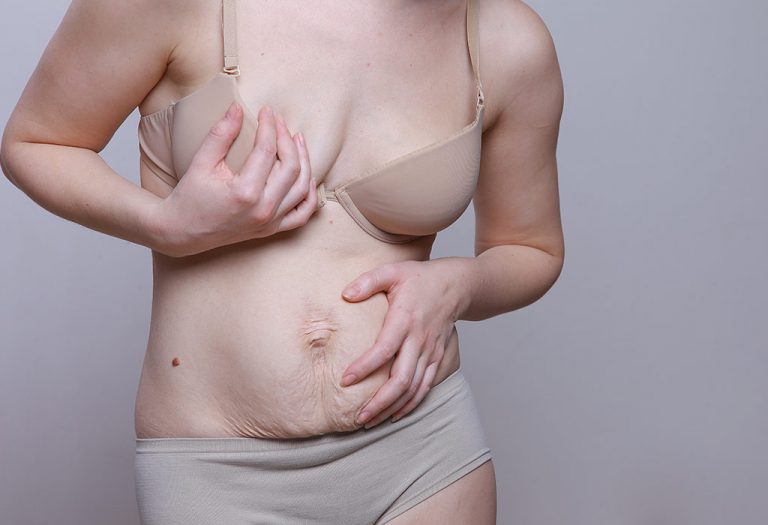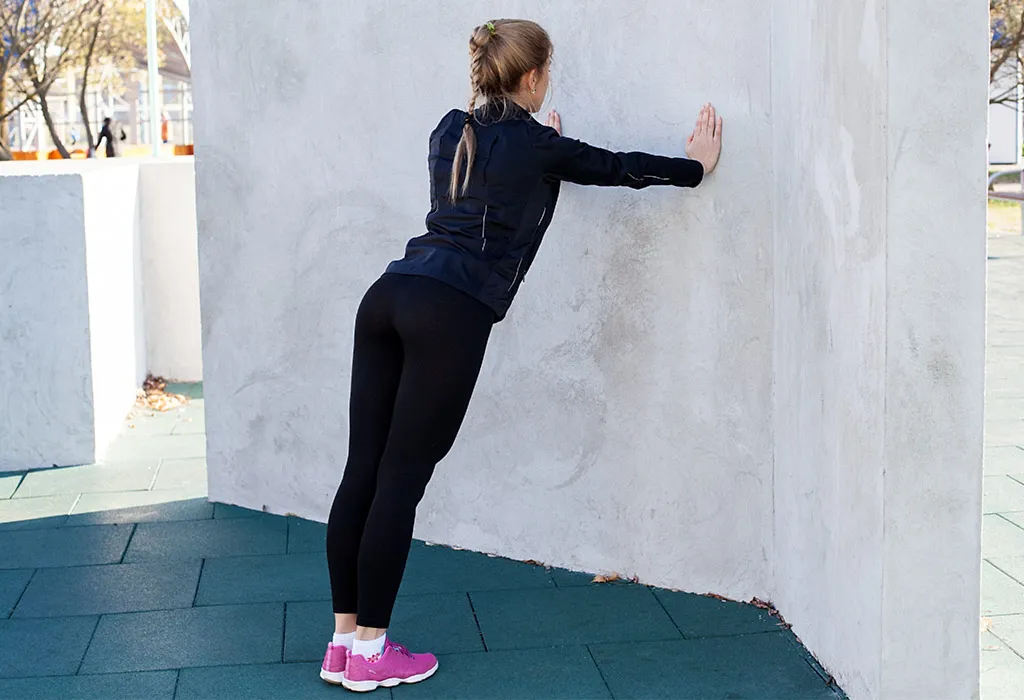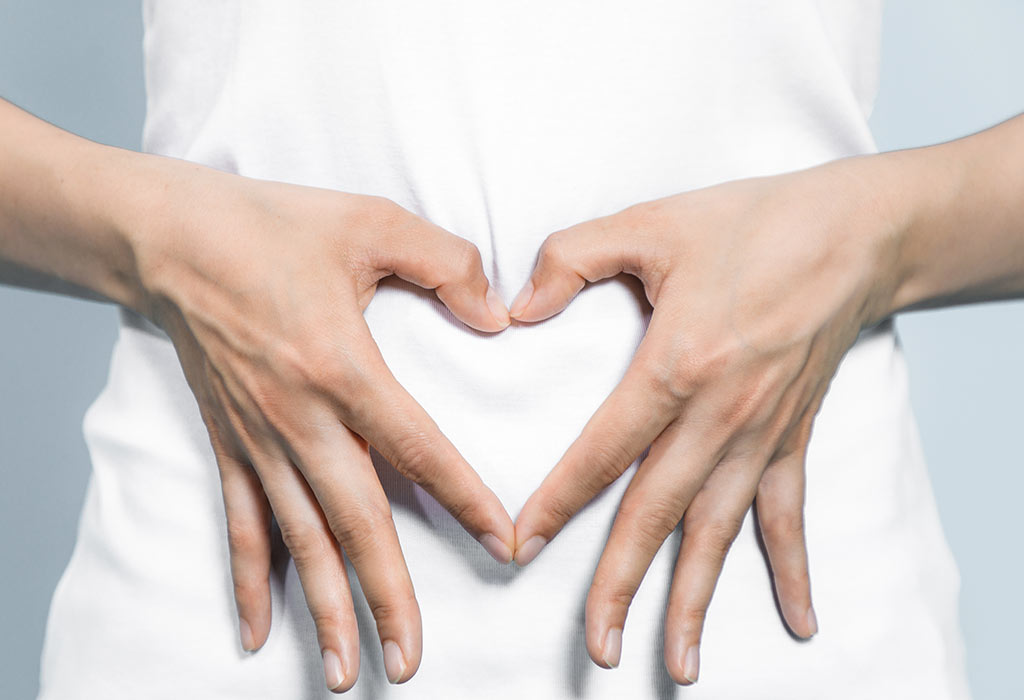Diastasis Recti (Abdominal Wall Separation) – Causes and Treatment

Diastasis recti, also called abdominal separation, is a condition where the abdominal muscles separate along the midline, often noticed during or after pregnancy (1). As the uterus expands to make room for the growing baby, the connective tissue between the abdominal muscles can stretch, leading to a visible gap or bulge. While it is a common occurrence among expectant and new mothers, it can sometimes cause discomfort, back pain, or core weakness. Understanding its causes, symptoms, and treatment options can help women manage it effectively and support their recovery after childbirth.
What Is Diastasis Recti?
The term diastasis recti refers to the abdominal wall separation after pregnancy. ‘Diastasis’ means separation, and ‘recti’ means rectus abdominis or the ab muscles.
In simple terms the diastasis recti meaning is the protruding belly pooch or the bulge that remains apparent for some women, even after losing pregnancy weight can be diastasis recti. In colloquial terms, it is also referred to as ‘ab separation.’
How Common It Is?
Diastasis recti, or abdominal wall separation, is a fairly common condition that mostly affects women during and after pregnancy. Studies suggest that more than half of women (about 6 in 10 women) experience some degree of separation in the late stages of pregnancy or postpartum (2). Abdominal separation typically gets better in the next weeks or months after childbirth (3). While it often improves with time, some cases may persist and require targeted exercises or medical attention.
What Causes Diastasis Recti?
There are two parallel bands of vertical muscles in the abdomen which are connected by tissues. These abdominal muscles are responsible for stabilising the core and holding the internal organs together. During pregnancy, as the foetus grows, the uterus pushes the muscles in the abdomen to stretch on either side. This stretch causes the abdominal muscles to separate, leading to a loss of shape and a gap in the middle of the abdomen.
It is a natural process during pregnancy for the muscles to separate. In the course of healing, it attains the previous form. If it does not, for a prolonged time, then you may have a chance of having diastasis recti, which can range from mild to moderate to severe. The right and left sides of the abdominal muscles stay separated and pushed outward (2).
Diastasis recti is commonly seen in women with a history of multiple pregnancies, as the muscles have been stretched several times (4).
Diastasis Rectus Abdominis Symptoms
Diastasis recti can present with both visible and physical signs. Some people may notice it immediately, while others may only feel subtle changes in their abdominal strength. Common abdominal separation symptoms include:
- A visible bulge or “pooch” in the abdomen, especially when straining
- A noticeable gap between the abdominal muscles
- Weakness in the core or trunk area
- Poor posture or lower back pain
- Difficulty lifting heavy objects
- A domed appearance of the belly during specific movements
- Reduced stability in the midsection
- Digestive discomfort, such as bloating or constipation
- Pain around the abdomen or pelvis
- Trouble performing exercises that involve the core
- Feeling of looseness or lack of support in the abdominal wall
How to Know If You Have Diastasis Recti?
A common DIY technique is followed by women to identify the separations. The steps are –
Step 1: Lie down on the floor on your back with your knees folded and feet on the ground.
Step 2: Place your palms on your stomach on the two sides of the belly button. Now, very gently lift your head, not as much as you would do for your crunches, but just a slight lift.
Step 3: Move your fingers on the line of the belly button; you may feel that you are able to dig your fingers into what may appear as a gap in the belly.
Diastasis is commonly measured in terms of how many fingers deep the separation of the two muscles is felt. You can verify this with your gynaecologist before reaching a conclusion.
Other Complications Due to Diastasis Recti
Mentioned are a few problems that are related to diastasis recti:
1. Umbilical Hernia
The likelihood of having a hernia in the future increases if you suffer from abdominal separation for a long time. Hernia surgery may relapse if the diastasis is not treated properly.
2. Poor Posture
The ridge created in the abdomen results in poor posture.
3. Lower Back Pain
Another associated complication is lower back pain. The separation of the abdominal muscles leads to chronic back pain (5).
Diagnosis of Diastasis Recti
Doctors usually diagnose diastasis recti through a physical examination. A healthcare provider will ask you to lie flat and perform a small crunch-like movement to feel for the gap in your abdominal wall. If the separation is more severe, imaging tests such as ultrasound, CT scan, or MRI may be recommended to assess the extent of the muscle gap (2).
Treatment for Diastasis Recti
Abdominal diastasis treatment can be different for different cases. Therefore, it is essential to work with a physical therapist who is very educated about abdominal diastasis. Here are some suggested measures on how to cure diastasis recti:
1. Physical Therapy
Diastasis recti physical therapy involves a trained therapist who provides postural training. Experts will also suggest some low-impact, moderate-intensity exercises to stabilise your core without disturbing abdominal muscles (6).
2. At-home Exercises-Tupler Technique or Mutu System
These techniques have gained popularity in the recent past. Backed by research and proven techniques, these at-home treatment series help in healing diastasis recti by 55 per cent. The focus is on training the separated muscles to become stronger and, within a short time, come together.
3. Surgery
If the above-mentioned corrective actions fail or the results are not satisfactory, the last option is to undergo surgery. Also, a prolonged diastasis may lead to an abdominal hernia. The surgery, abdominoplasty, surgically reduces the gap between the two muscles. It is important to keep this as a last resort and to speak with the specialist about the process and the possible repercussions of the surgery.
Dos and Don’ts
Just like any other physical ailment, Diastasis Recti can be healed by following the right steps, such as Kegel exercises. However, it can also be aggravated by issues like constipation.
Dos:
- Perform the exercises which gently work on your abdominal muscles. These suggestions are made for all women in the post-partum phase. Exercises, such as Kegel exercises, core strengthening exercises, breathing exercises, and proper body postures, are beneficial.
- Once the connective tissue has fully healed, engaging in Pilates or other exercises can help you strengthen and utilise your transverse (deep core) abdominal muscles rather than the superficial ones. However, not every Pilates or strengthening exercise is suitable during pregnancy, so it’s important to collaborate with a trainer who understands what “diastasis recti” refers to.
Don’ts:
Here are some of the things you shouldn’t do:
1. Exercises Which Put Pressure on the Abdomen
Avoid push-ups, sit-ups, crunches and planks, which put a direct strain on the abdomen and pelvic muscles. Also, avoid yoga and swimming postures that put a strain on the body.
2. Lifting Heavy objects
Lifting heavy items can put undue strain on your body.
3. Constipation
Constipation can lead you to exert pressure on the abdomen, causing the condition to get worse. Always have a fibre-rich diet and plenty of water to prevent constipation. If you have constipation, avoid straining for too long and pass motion only when there is an urgency to do so.
Exercise for Abdominal Separation
Diastasis can be corrected with the help of exercise. Here are a few abdominal separation exercises that you could do:
1. Kegel Exercises
Kegel exercises are essentially about increasing pelvic muscle strength.
- Kegel can be practised anywhere, anytime. You need to imagine trying to stop the flow of urine without moving your body.
- It strengthens the pelvic muscles and prepares the body for labour and natural birthing. The body is better prepared to relax and control the pelvic muscles.
2. Core Strengthening Exercises
It is a good idea to start core strengthening exercises before you get pregnant. Benefits of core strengthening exercises:
- It brings balance to the body by training the pelvis, lower back, abdomen, and hips, which results in fewer aches and pains during pregnancy.
- A strong core adapts better to changes in the body, and it is easier for the abdomen to regain its shape after delivery.
- Results have also shown that it minimises the risk of diastasis recti and even improves it.
3. Body Postures
A corollary to the previous point, it is very important to maintain a good body posture.
- Good posture reduces pain in the lower back, pelvis, and neck.
- Allows more space for your baby to grow well.
- Most importantly, it minimises the chances of developing a diastasis recti and allows the muscles to get back to their form after the pregnancy.
4. Breathing Exercises
The benefits of breathing increase manifold for women during pregnancy.
- It provides the body and brain with the required oxygen supply for the foetus.
- Reduces stress and keeps the body at ease, allowing the muscles to remain taut and recover quickly.
5. Belly Breathing
Lie on the floor on your back. Keep your palms gently on your lower rib cage. Next, inhale deeply but gently, allowing your chest and belly to rise, and feel the pressure on your diaphragm. Exhale.
6. Standing Push-ups
Stand facing the wall. Let the distance from the wall be an arm’s length. Keep your feet wide. Now place your palms on the wall and inhale. While you exhale, push your belly to your spine. Lean in towards the wall when you inhale and push outwards when you exhale.
7. Lower Abdomen Exercise
Lie on your side. With the other palm, feel your abdominal muscles. Then, gently pull your lower abdominal muscles towards your pelvic bone. Breathe normally throughout. Relax between the two sets.
8. Bent Knee Fallout
Lie on your back and keep your knees bent and feet flat on the floor. Now inhale gently and lower one leg to the side while the other leg remains stationary. Repeat this with both legs.
How Often Should You Perform These Exercises?
You can start practising it from one week to three weeks after pregnancy. The breathing exercises can be done for a 5 to 10-second hold. You can start with 2-3 iterations and increase as you get comfortable. It is recommended to consult your gynaecologist or a trained practitioner about your exercise patterns.
How to Prevent Diastasis Recti?
A certain degree of abdominal separation is normal with pregnancy. There are steps you can take to reduce the likelihood of developing diastasis recti:
- Keep your weight gain within a healthy range throughout your pregnancy – Incorporating exercise and nutritious foods can help you manage your weight gain appropriately. Consult your healthcare provider if you have questions about the amount you should gain.
- Focus on maintaining proper posture and deep breathing – Stand tall with your shoulders retracted. Engage in deep breaths that allow for rib expansion rather than solely expanding your abdomen.
- Engage in safe core workouts. – After 12 weeks of pregnancy and during the postpartum period, steer clear of exercises like sit-ups and crunches that stress your abdominal muscles.
- Avoid excessive strain while lifting items – Everyday activities such as lifting grocery bags or carrying your children can unnecessarily pressure your abdominal muscles.
- Use a log roll technique when getting out of bed – Roll onto one side and leverage your arms to lift yourself up from the bed.
When to Seek Medical Help?
In most cases, diastasis recti improves with time and gentle core exercises. However, medical help may be needed if the condition is causing discomfort or interfering with daily activities. Seek a doctor’s advice if you experience:
- Persistent or worsening abdominal pain
- A noticeable bulge that doesn’t improve
- Difficulty with bowel movements or urination
- Back or pelvic pain that limits mobility
- No improvement after several months of exercise
A healthcare provider can recommend physiotherapy, specialised exercises, or, in rare cases, surgical repair if the separation is severe.
FAQs
1. Can diastasis recti heal on its own?
Yes, there are several cases of healing or diastasis recti after childbirth. In many cases, mild diastasis recti improves naturally within a few months after childbirth as the abdominal muscles regain strength. Gentle core-strengthening exercises and proper posture can speed up recovery.
2. Is diastasis recti only seen after pregnancy?
No, while pregnancy is the most common cause, men and women who gain weight quickly, perform heavy lifting without proper technique, or have weak connective tissue can also develop diastasis recti.
3. Is it ever too late to heal your diastasis?
No, it is not. Treating a diastasis recti after pregnancy is all about healing the connective tissue that brings the abdominal walls back to their original shape. Just remember that –
- The process is gradual and slow; however, it is not impossible. With the correct exercises and techniques, it is possible to correct the diastasis.
- Follow techniques which are scientifically backed and time-tested, and if possible, under the guidance of a trained supervisor.
- The time required to heal largely depends on your body constitution and the width of the separation.
4. Can a splint or binder help?
Specially designed for pregnant women, these maternity belts or abdominal binders have traditionally been used in different cultures in the post-partum phase. It is a non-invasive intervention that supports the abdominal muscles and controls the pain. The restricted muscle movement provides a natural tummy tuck, and the firmness enables a good posture. Please consult your gynaecologist before you start wearing the belt.
Splints may help in the early stages by providing abdominal support; however, wearing a splint alone may not substitute for the treatment of diastasis. The abdominal muscles need to get back to a correct alignment, which may be restricted by the external pressure of the splint.
Motherhood brings along a plethora of changes in a woman’s life. While it is truly rewarding to bask in the joy of being a new mother, it is also of utmost importance that women take care of themselves. A problem like diastasis recti is extremely common, yet the most under-noticed and least talked about. It is time that women take charge of themselves and take the necessary actions. So, stay aware, stay healthy and stay happy!
Also Read:
Postnatal Diet
Post Childbirth Bleeding
Stomach Pain after Pregnancy
Benefits of Postpartum Massage
Mother’s Apron Belly after Pregnancy
Was This Article Helpful?
Parenting is a huge responsibility, for you as a caregiver, but also for us as a parenting content platform. We understand that and take our responsibility of creating credible content seriously. FirstCry Parenting articles are written and published only after extensive research using factually sound references to deliver quality content that is accurate, validated by experts, and completely reliable. To understand how we go about creating content that is credible, read our editorial policy here.
1. Mayo Clinic – Separation of the abdominal muscles during pregnancy
2. Cleveland Clinic – Diastasis Recti
3. Pregnancy Birth and Baby – Abdominal separation (diastasis recti)
4. MedlinePlus – Diastasis recti
5. NIH – Diastasis Recti Rehabilitation
6. PubMed Central – Treatment Options for Abdominal Rectus Diastasis

























